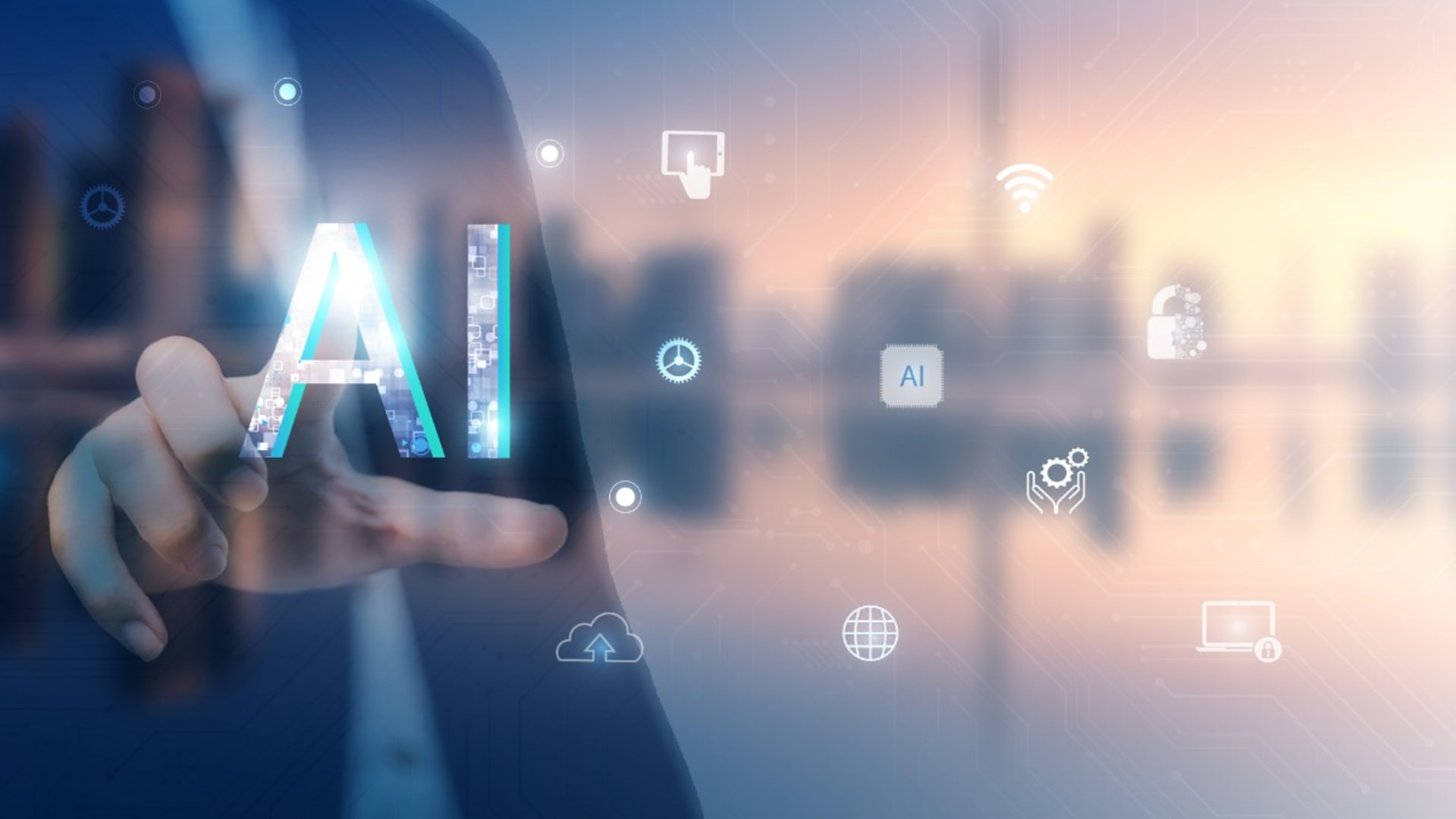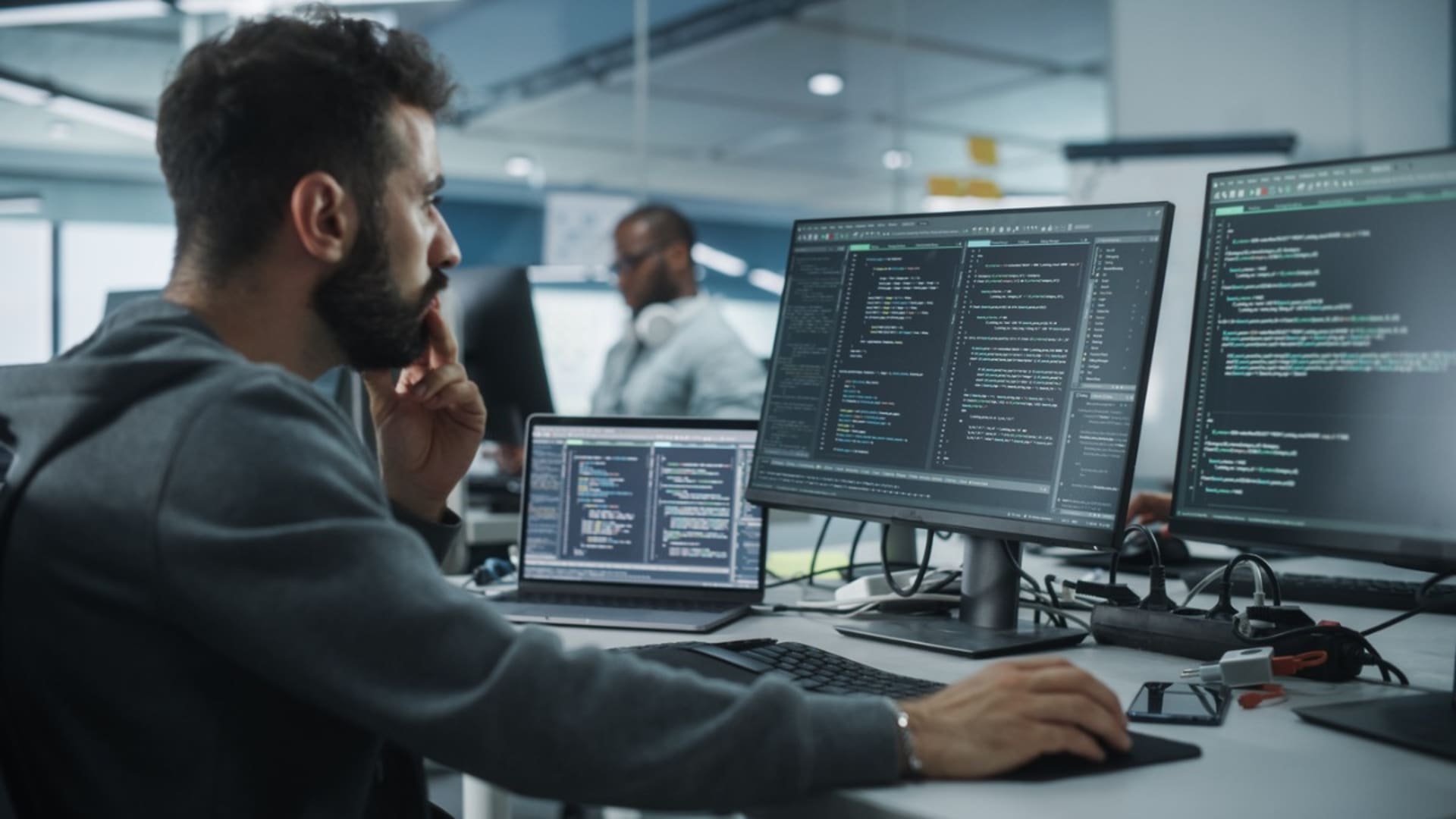A recent Forbes Business Council article effectively summed up the value of artificial intelligence (AI) tools by stating, “There’s a certain set of ideas that humans can computationally explore. There’s a broader set of ideas that humans with computers can address. And there’s a much bigger set of ideas that humans with computers, plus AI, can successfully tackle.” That set of ideas includes a wide range of endeavors, such as transportation, education, consumer experience, healthcare, addressing the climate crisis, and much more.
In short, AI has the potential to change our very way of life, similar to the major shift that occurred when the internet started. This change is just beginning to occur but, eventually, AI-powered systems will drive our cars, assist in education, make us healthier, optimize renewable energy systems, and even make our shopping experiences faster and easier.
AI is already entrenched in many of the systems we currently use, and experts predict many astounding changes to take place in the coming years. In particular, the next 10 years should bring a wave of transformation that will extend our current technology by orders of magnitude. In the following sections, we explore specific areas in which these shifts will occur.
Autonomous Driving
Autonomous driving is the ability of vehicles to operate without human intervention. This process requires sensors and cameras to detect objects such as other vehicles, pedestrians, and roadway obstructions in the surrounding environment and complex computing systems to analyze the data from these devices.
Currently, all new vehicles are equipped with basic driver assistance features, such as lane-keeping assist and blind spot assist. Some have more advanced systems that can take control of the vehicle under certain circumstances, but drivers must still be alert and ready to resume control at any time. Driverless vehicles are also in use, though mostly in experimental contexts in very small numbers.
The condition of having all vehicles on the road operated entirely automatically is a long way off, but AI is helping the auto industry move in that direction. Upon analyzing the data from sensors and cameras, AI can make decisions about specific driving actions such as accelerating, braking, or swerving to avoid objects. It can also determine the best driving route based on traffic analysis. With machine learning (ML), AI can learn from previous driving trips and improve its performance over time.
Transportation and Logistics
By taking the methods used for autonomous driving a step further, AI is helping to advance transportation and logistics. For example, through analysis of traffic patterns, road conditions, and other factors, AI algorithms can optimize routes for entire fleets of vehicles. This action can help companies provide more efficient services (such as faster deliveries) and save money on vehicles, labor, and fuel.
Additionally, AI algorithms can use vehicle sensors to monitor their condition and determine when they need to be repaired or replaced. This action can also help companies save money because small problems can be detected and fixed before they become major issues. Further, it can keep vehicles in better condition, reducing the frequency with which they must be replaced.
These actions can be combined with the analysis of supply chain data to optimize logistics operations. For example, AI algorithms can analyze data from sensors that track inventory levels to ensure just-in-time inventory management. Partnering with a logistics software development company can maximize these AI-driven strategies, enhancing overall efficiency and cost-effectiveness in logistics operations.
Personalized Medicine
Certain medical treatments aren’t always appropriate for every patient, even those with the same diagnosis. That’s why researchers have been working toward providing personalized medicine, especially since the decoding of the human genome. Progress has been slow, but AI could help. According to the Forbes Business Council article, “One compelling emerging application of AI involves synthesizing individualized therapies for patients. Moreover, AI has the potential to one day synthesize and predict personalized treatment modalities in near real-time.”
The process for providing individualized treatment involves the creation of digital twins of individual biological and environmental factors, which generate tremendous amounts of data on factors like genetics, lifestyle, and diet. This data can help doctors and researchers make accurate diagnoses and, even better, predict the likelihood of certain diseases or conditions so patients can take preventative measures. Such developments have the potential to significantly and permanently change the way medicine is practiced.
The following video describes the potential uses for personalized medicine, referred to here as precision medicine, in treating cancer.
Energy Efficiency
Energy efficiency is important for burning less carbon, which helps the environment and everyone living in it. It is also important for both consumers and businesses in that using less energy can help them save money. AI can contribute to these goals in several ways. First, AI algorithms can be used to automate heating and cooling systems within buildings to optimize energy consumption based on occupancy, weather, and time of day.
Additionally, AI algorithms can analyze data from past energy consumption to predict future demands and identify opportunities to reduce energy use. This process is important for both end users and companies that provide energy developed from many different sources, including both fossil-based and renewable. Energy companies are deploying smart grids, which use AI algorithms to manage the flow of energy to and from various sources, including the energy provider and distributed energy resources such as solar panels on homes.
AI can also contribute to energy efficiency by optimizing manufacturing processes to reduce energy consumption and optimize the performance of renewable energy sources. All these processes have the potential to provide significant cost savings and environmental benefits.
Smart Homes
A smart home is a residence that uses automation to control various aspects of the environment, including temperature, lighting, security, entertainment, and appliances. Smart homes require central operating systems, commonly known as hubs, which are typically voice- or screen-activated and driven by AI.
In addition to operating smart home devices, the AI-powered hubs can analyze data from them to learn the habits and preferences of household members. This process enables the system to make predictions about conditions that residents might want and adjust them accordingly. For example, during the winter, a smart home system may turn up the temperature in the home around 3:00 o’clock, when occupants start coming home from school and work.
AI-based security systems can recognize the facial features of household members and enable them to enter the premises without the use of keys. They can also learn the habits of household members and alert residents of unusual activity that may indicate the presence of an intruder.
Help for the Climate Crisis
Innovative and amazing work has been done to address the climate crisis. It includes the development of alternative fuels, renewable energy sources, and other methods for minimizing the amount of carbon in the planet’s atmosphere.
Additional ideas are constantly emerging, including “prediction markets powered by AI that can tie policy to impact, taking a holistic view of environmental information and interdependence,” according to the Forbes Business Council post. Such a system would require “staggering amounts of real-time data and computation to detect nuanced trends imperceptible to human senses.”
Other new technologies, such as carbon capture and storage, renewable energy management, and smart grids also require AI involvement to be successful. For example, smart grids are composed of sensors, communication networks, and advanced analytics to manage electricity supply and demand. These elements and processes generate tremendous amounts of data that couldn’t be handled by human efforts.
Customer Experiences
The use of AI can help deliver new and improved customer experiences, both in-store and online. For one thing, AI can make the shopping experience more personalized. AI algorithms can analyze customer data, including past purchases, browsing behavior, and other activities online. They can use this information to provide customized recommendations and offers. This process can take place in both physical and virtual environments. Such service helps to increase customer loyalty, engagement, and dollars spent.
AI algorithms can also analyze customer data on a more general level. Sentiment analysis takes into consideration things like social media posts and online reviews to understand the overall customer experience and identify areas for improvement. Making these improvements is another way of enhancing the customer experience.
This technology can also help with more specific actions, such as providing chatbot assistance 24/7. Because they are AI driven, chatbots can understand natural language, interpret customer requests, and provide appropriate responses, including referring customers to a human agent when necessary. The use of chatbots can increase the speed with which customers get their requests addressed.
Education Tools
As with shopping, AI has the potential to make education a much more personalized experience. AI algorithms can analyze student data, such as test scores and learning style to create customized lesson plans and feedback to help students learn in ways that are best suited to them. AI-powered tutoring systems can act as learning coaches to help students master challenging concepts and overcome obstacles to learning. They can even respond to student questions and provide appropriate responses.
In addition to helping students directly, AI algorithms can help teachers be more effective at their jobs. For example, they can help create educational content, including videos and simulations, increasing the quality of these materials. AI algorithms can also be used to develop tests and quizzes that are appropriate for the subject matter and the learning level of the students.
Language Translation
AI can help bridge the communication gap between people who speak different languages. This assistance can be particularly helpful in business situations, especially now that many companies are able to take advantage of remote work capabilities to hire employees from all over the world. AI-powered speech translation systems can translate spoken language in real time. These systems use speech recognition and ML to produce accurate translations.
Language learning systems based on AI can offer personalized language instruction, helping people to learn a new language more effectively. These systems use processes similar to those mentioned above for education. For example, they can create lessons based on students’ levels of understanding, provide targeted exercises, and develop assessments that help learners see where they need to improve.
For written text, AI-powered neural machine translation systems can translate from one language to another in real time with a high degree of accuracy. These systems can also analyze language patterns and sentiment in text, helping businesses and organizations to better understand and communicate with colleagues and customers who speak different languages.
Cybersecurity
In several ways, AI-powered cybersecurity systems can help companies be more secure. First, these systems can analyze large volumes of network traffic data to identify potential threats before they can cause damage. These systems use ML to recognize patterns and detect anomalies that might indicate malicious activity.
Additionally, AI-powered malware detection applications can scrutinize software and code for signs of danger and prevent them from being installed on a network. These systems can also analyze financial transactions and monitor user behavior for indications of fraud, so operators can take immediate actions to prevent the loss of funds and private data.
Further, AI-enabled password security systems can search for weak passwords to reduce the risk of unwanted intrusion and improve overall system security. Finally, incident response systems powered by AI can quickly identify and help operators respond to threats and recover lost data if needed.
Financial Planning
For both individuals and companies, AI-supported financial planning tools contribute to better budgeting, investing, and overall financial management. For example, these systems can analyze any proposed action for potential risk with insights into markets, credit availability, and other factors. Investment analysis tools are used to examine market trends to help investors make more informed decisions based on more accurate predictions of performance.
These systems also help banks protect assets for both individuals and companies. Financial institutions can use AI-powered customer care to ensure customers get help any time they need it.
Virtual Assistants
Anyone who has used AI-based virtual assistants like Siri, Alexa, or Google knows how handy they can be for things like getting the weather forecast or sports scores, driving to a location in an unknown town, making a hands-free call, or playing music on demand. In the coming years, AI assistants will do even more. For example, they can be used to help consumers shop online, with product recommendations and purchasing options based on their preferences and order history.
Virtual assistants can help in other areas, such as healthcare and education as well. For example, an assistant could remind a patient to take medicine, monitor their heart rate and other physiological states, or provide information specific to their health status or condition. These programs can also be available to answer questions about subjects students might be studying, and even help with research.
Scientific Research
The Forbes Business Council post notes, “In recent decades, there has been considerable, well-deserved concern about scientific progress slowing down. Scientists may no longer be experiencing the golden age of discovery.” With AI and ML, which allows researchers to create algorithms that can learn from data, that state of affairs could change significantly. That’s because, according to the post, “AI enables an unprecedented ability to analyze enormous data sets and computationally discover complex relationships and patterns.”
This shift has the potential to drastically improve scientific research in many ways. It can analyze large amounts of data and identify patterns more quickly and accurately than humans, resulting in faster discoveries and advances in various fields. Beyond analysis and pattern identification, AI can make more accurate predictions than humans do, improving fields such as healthcare, finance, transportation, energy, and agriculture.
How to Unleash the Power of AI
Every business should start thinking about how these developments could impact their operations. Those in industries like automotive, health care, retail, education, and energy production can probably see the potential fairly clearly:
- Automotive manufacturers are already changing their operations to be based on the production of automated models.
- Healthcare practitioners are already helping patients use AI-enabled devices to monitor their health and make good lifestyle choices.
- Retailers are using big data analysis to determine what customers want and are also providing chatbots to ensure they get the care they need.
- Educators are already using AI-generated lesson plans to provide their students with valuable educational experiences.
- Energy providers are making use of smart grid and other technologies to usher in the energy transition.
Other companies can think about things like language translation to consider expanding into markets in new countries. They can take advantage of enhanced cybersecurity to be more confident in their ability to provide cloud services. And they can use enhanced transportation and logistics to improve their services for customers. The possibilities are nearly limitless, and every company should take this opportunity to imagine things they never thought possible before.
If you enjoyed this, be sure to check out our other AI articles.






